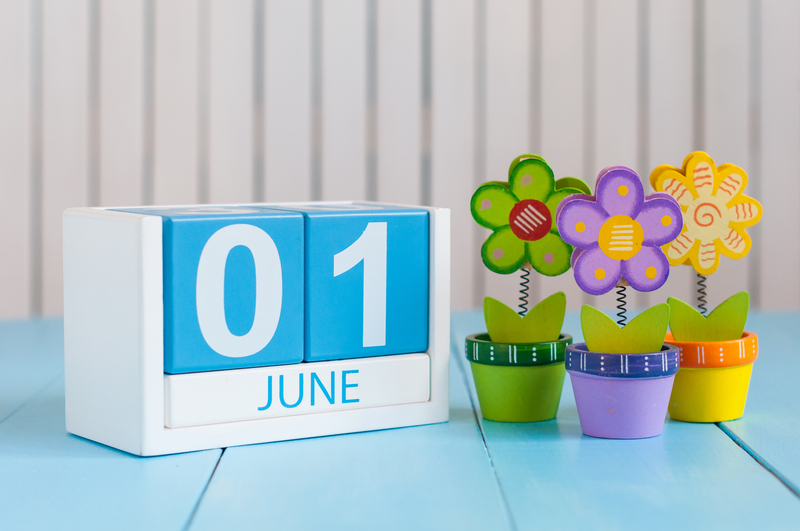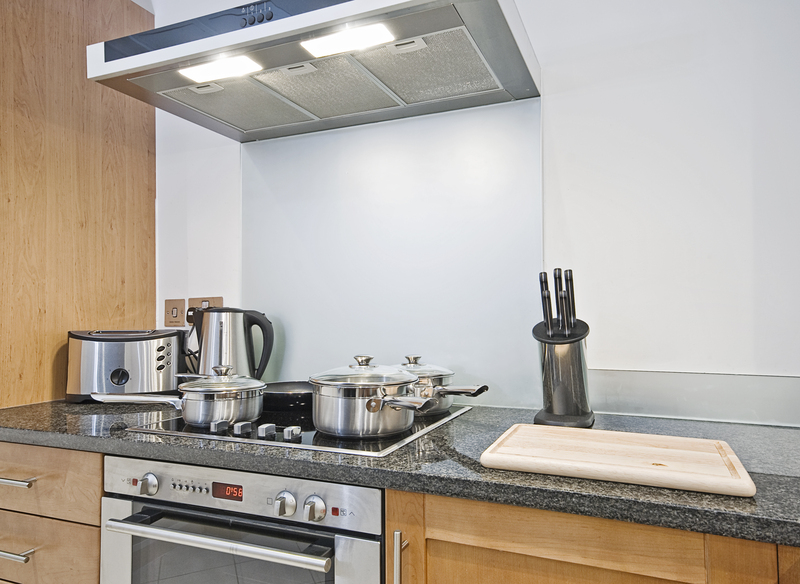Secrets to Keeping Your Bathroom Free from Mold
Posted on 01/07/2025
Secrets to Keeping Your Bathroom Free from Mold
Bathrooms are one of the most susceptible areas in any home when it comes to mold growth. The combination of heat, humidity, and limited ventilation makes them a prime target for these unsightly and potentially harmful fungi. Whether you're a homeowner, a renter, or a property manager, learning the secrets to keeping your bathroom free from mold is crucial for both the health of your living space and the overall aesthetics of your home.

Why Is Mold a Problem in Bathrooms?
Mold isn't just an ugly nuisance. It can be a serious health hazard, especially for individuals with allergies, asthma, or weakened immune systems. Prolonged exposure to mold spores may cause symptoms such as nasal stuffiness, throat irritation, coughing, and even skin irritation. In more severe cases, it can trigger asthma attacks or cause respiratory infections.
- Structural Damage: Mold can eat away at drywall, grout, and other building materials, leading to costly repairs.
- Odor: Mold emits a musty, unpleasant odor that can permeate your entire home if left untreated.
- Health Risks: Long-term exposure can lead to more severe health complications.
Knowing how to keep your bathroom mold-free will protect your home, your finances, and your family's health.
Main Causes of Bathroom Mold
Understanding the Enemy: Why Bathrooms Are Prone to Mold
Bathrooms offer the perfect storm of conditions for mold to thrive:
- Moisture: Showers, sinks, and bathtubs create a constant source of humidity and dampness.
- Poor Ventilation: Many bathrooms lack adequate airflow, trapping moisture and making it harder to dry out surfaces.
- Porous Surfaces: Grout, caulking, and even towels can absorb and retain water.
If you're determined to prevent bathroom mold, it's essential to target these factors with effective strategies.
Top Secrets to Keeping Your Bathroom Free from Mold
1. Maximize Ventilation
One of the most effective ways to keep bathrooms mold-free is to improve air circulation. Here's how:
-
Install a High-Efficiency Exhaust Fan:
- Ensure the fan is rated for your bathroom's size.
- Run the fan during every shower and for at least 20 minutes after to remove excess humidity.
- Open Windows When Possible: Allow fresh air to reduce lingering moisture.
- Leave Doors Open: After using the bathroom, keep the door open to promote cross-ventilation.
Expert Tip: Regularly clean the exhaust fan and make sure it is not obstructed by dust or debris for optimal performance.
2. Keep Surfaces Dry
Moisture control is at the heart of keeping bathrooms free from mold. Always remember:
- Wipe Down Wet Surfaces: After showering, quickly towel-dry tiles, floors, and counters.
- Squeegee Shower Walls & Doors: Investing in a small squeegee minimizes water left on surfaces.
- Hang Towels to Dry: Never leave towels, bathmats, or washcloths crumpled in the bathroom.
3. Fix Leaks Promptly
Mold loves leaks. Even minor drips from a faucet, showerhead, or toilet can create the persistent dampness that mold requires to thrive.
- Regular Inspections: Check pipes, toilets, and under sinks periodically for hidden leaks.
- Seal Cracks: Resecure any loose or cracked tiles that allow moisture to seep through.
- Replace Faulty Seals: Old caulk or grout should be replaced to block moisture intrusion.
4. Clean Frequently with Mold-Resistant Solutions
A tough cleaning routine is a crucial bathroom mold prevention strategy. Use the following methods and products:
- Vinegar Spray: White vinegar is a natural mold killer. Spray onto tiles, let sit for an hour, and rinse.
- Baking Soda Paste: Mix baking soda with water and scrub grout or tiles with a brush for deep cleaning.
- Hydrogen Peroxide: Spray 3% hydrogen peroxide on affected areas and let it bubble before wiping.
- Commercial Cleaners: Use a specialized bathroom mold remover for stubborn growth.
Important: Avoid mixing chemical cleaners, especially bleach and ammonia, as they can produce dangerous fumes.
5. Use Mold-Resistant Materials
Renovating or updating your bathroom? Choose mold-resistant materials whenever possible:
- Mold-resistant drywall (greenboard or cement board)
- Moisture-resistant paint
- Epoxy grout (less porous than standard grout)
- Fiberglass or acrylic shower surrounds
These upgrades are especially important in bathrooms with persistent moisture problems or prior history of mold.
6. Eliminate Clutter
Shampoos, body washes, and sponges left around the tub or shower can collect moisture beneath them, providing a hiding place for mold.
- Use Shelving or Caddies: Store bath products where water can easily drain and air can circulate.
- Minimize Items on the Floor: Keep as much off the floor as possible to reduce moisture retention.
7. Control Humidity Levels
Maintaining an ideal humidity level (generally between 30% and 50%) can significantly help you keep your bathroom mold-free.
- Invest in a Hygrometer: This inexpensive device monitors humidity so you can take action if levels become too high.
- Dehumidifier: In bathrooms without good ventilation, a small, portable dehumidifier can be a game-changer.
Lower humidity = lower risk of mold.
8. Address Mold Growth Immediately
If you spot even the smallest patch of mold, don't wait:
- Clean with the tips above.
- Find the source of moisture and resolve it.
- Use a mold inhibitor spray to prevent regrowth.
The sooner you tackle mold, the easier it is to keep your bathroom mold-free.
Mold Prevention Checklist for the Bathroom
Use this checklist to maintain a healthy, mold-free bathroom:
- Ventilate after every shower or bath
- Use squeegee on shower walls & doors
- Hang towels and bathmats to dry
- Wipe down countertops & sinks daily
- Inspect for leaks under sinks & around toilets weekly
- Clean grout and caulk monthly
- Monitor humidity levels
- Declutter shower and tub area
Bonus Tips and Proactive Measures
- Install a Timer Switch: Use a timer switch on your bathroom exhaust fan for automatic, prolonged operation after bathing.
- Apply a Grout Sealer: Protect new or freshly cleaned grout with a quality sealer to make it less porous and easier to clean.
- Replace Shower Curtains Regularly: Opt for mildew-resistant fabric or plastic curtains, and wash them monthly.
- Use Essential Oils: Tea tree oil, lavender, and eucalyptus are natural fungicides--add a few drops to your cleaning spray for extra mold-fighting power.

Frequently Asked Questions About Bathroom Mold Prevention
How do you keep black mold out of the bathroom?
Black mold is especially stubborn and hazardous. Prevention is the best cure: maintain low humidity, clean surfaces regularly, fix leaks, and remove excess moisture from the air. If black mold is already present, consider professional remediation for large or persistent infestations.
Is bleach or vinegar better for mold removal?
Vinegar is effective on many common molds and is non-toxic, making it a preferred choice for regular maintenance. Bleach can remove superficial mold from non-porous surfaces, but it's less effective on porous materials and produces harsh fumes. For porous surfaces, stick to natural solutions like vinegar and baking soda.
Can mold in the bathroom make you sick?
Yes, exposure to mold can cause health issues, especially if you have respiratory conditions, allergies, or compromised immunity. Limit your exposure by keeping your bathroom mold-free using the strategies above.
Conclusion: Achieving a Mold-Free Bathroom for Good
Achieving and maintaining a bathroom free from mold is not an unattainable goal. By understanding the causes of mold growth, taking proactive measures, and following the secrets outlined in this comprehensive guide, you'll enjoy a bright, clean, and healthy bathroom space for years to come.
Remember: moisture is the enemy -- fight it with adequate ventilation, prompt cleaning, repairs, and vigilance. Follow these expert tips and your bathroom will remain fresh, inviting, and most importantly, free from toxic and unsightly mold.
Take charge today, and let your bathroom become a showcase of cleanliness and health instead of a breeding ground for mold!




